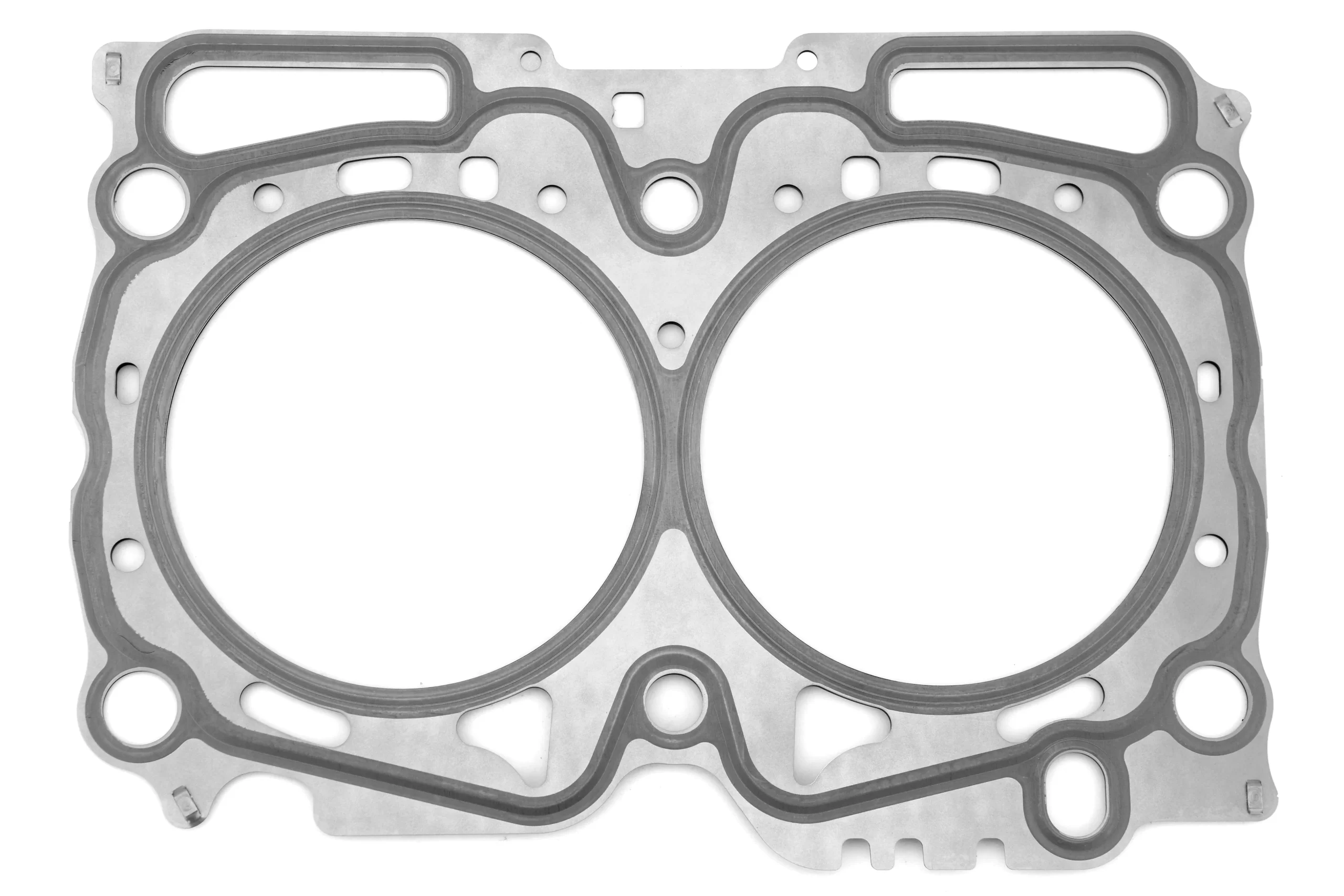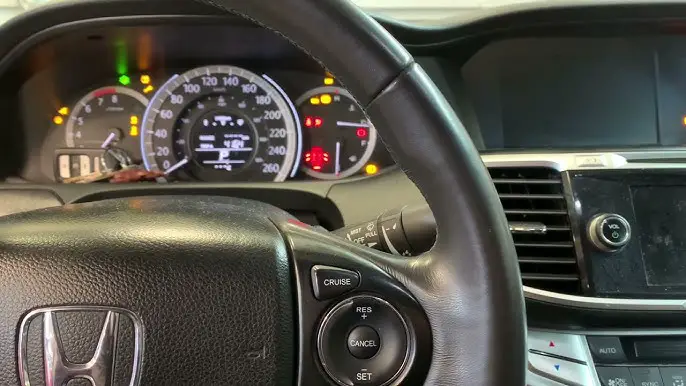Subaru is a popular brand of cars that offers reliability, performance, and style.
However, some Subaru models have a notorious problem with their head gaskets, which can cause serious engine damage and expensive repairs.
What are the main Subaru head gasket problems and how can you avoid them?
In this article, we will explain what a head gasket is, why it fails, and what symptoms to look out for.
We will also tell you which Subaru models and years are most affected by this issue and what you can do to prevent it.
If you own a Subaru or are thinking of buying one, you will want to read this article carefully.
What years Subaru have had head gasket problems?
The Subaru models that had the most head gasket problems were the 1996-2004 models with the 2.5-liter four-cylinder engine, also known as the EJ25 motor. The single overhead camshaft (SOHC) variant was more prone to failure than the dual overhead camshaft (DOHC) variant. The head gasket problems were mainly caused by the composite-style head gaskets that Subaru used in these engines.
Some of the symptoms of a head gasket leak include an oil leak, heater blowing cold, overheating, white exhaust smoke, and foamy oil cap. Subaru began using a multi-layered steel cylinder-head gasket in 2009, which reduced the head gasket problems significantly.
What Are The Main Subaru Head Gasket Problems?
Subaru’s reputation for head gasket issues is a bit notorious. One of the main problems is with the external coolant leaks caused by a failing head gasket. Over time, the gasket can deteriorate, leading to coolant leaking externally and potentially causing overheating.
Another issue is the internal coolant leaks, where the gasket allows coolant to mix with the engine oil. This can lead to a host of problems, including engine damage, reduced lubrication effectiveness, and compromised performance.
It’s worth noting that Subaru has made improvements in its head gasket design in recent years, but it’s always a good idea to stay informed and keep an eye on your vehicle’s performance.
Why are Subaru head gaskets so bad?
Subaru head gaskets are known to fail in some models, especially the 2.5-liter four-cylinder engines with single overhead camshaft (SOHC) design.
These engines were used in many Subaru vehicles, such as the Forester, Impreza, Outback, Legacy, and Baja, from 1999 to 2010. The main reason for the head gasket problems is the composite-style head gaskets that Subaru used, which were not able to withstand the heat and pressure of the engine.
The head gaskets would leak oil and coolant, causing overheating, white smoke, and foamy oil caps. Subaru has since improved the head gasket design and material, and the newer models are less prone to this issue.
However, if you own or plan to buy a Subaru with the affected engine, you should be aware of the symptoms and the cost of repair, which can range from $1,500 to $3,000.
How do I know if my Subaru head gasket is leaking?

Keeping an eye out for signs of a leaking head gasket is crucial for early detection. Here are some common indicators:
External Coolant Leaks:
- Visible Coolant Puddles: Check under your vehicle for any puddles of coolant. If you consistently find coolant without any apparent reason, it could be a sign of an external leak.
- Overheating: If your Subaru is frequently overheating, it might be due to a coolant leak. Monitor your temperature gauge regularly.
- Low Coolant Levels: Regularly check your coolant levels. If you find yourself having to top up the coolant frequently, it could indicate a leak.
Internal Coolant Leaks:
- Milky or Frothy Oil: Check the engine oil dipstick. If the oil appears milky or frothy, it’s a sign of coolant mixing with the oil.
- White Smoke from Exhaust: Excessive white smoke coming from the exhaust can be an indication of coolant burning in the combustion chamber.
- Sweet Smell from Exhaust: A sweet smell from the exhaust could be a sign of coolant being burned in the engine.
Also Read: What Are The Subaru Engine Problems?
How long do head gaskets last in Subarus?
The lifespan of head gaskets in Subarus can vary, and it depends on several factors such as driving conditions, maintenance, and the specific model. In the past, Subaru had a reputation for head gasket issues, particularly in certain models produced in the late 1990s and early 2000s.
However, Subaru has made improvements to its head gasket design in more recent years. Modern Subaru models, especially those manufactured after the mid-2000s, tend to have more robust head gaskets, and the issues are less common.
As a general guideline, with proper maintenance and care, head gaskets in newer Subarus can last well beyond 100,000 miles. Regularly checking coolant levels, monitoring for any signs of external or internal leaks, and following the manufacturer’s recommended maintenance schedule can help ensure the longevity of the head gaskets and other engine components.
How do I stop my Subaru head gasket from failing?
Preventive maintenance and proactive care are key to reducing the risk of head gasket failure in your Subaru. Here are some tips:
-
Regular Maintenance
Follow the manufacturer’s recommended maintenance schedule. Regular oil changes, coolant flushes, and inspections can help catch potential issues early.
-
Coolant System Checks
Keep an eye on your coolant levels and check for any signs of external leaks. Low coolant levels or visible puddles could be indicators of a problem.
-
Avoid Overheating
Monitor your temperature gauge regularly and address any overheating issues promptly. Overheating can accelerate head gasket deterioration.
-
Use High-Quality Coolant
Use the recommended coolant type for your Subaru and ensure it’s changed according to the manufacturer’s guidelines.
-
Be Gentle on the Engine
Avoid aggressive driving and excessive strain on the engine. Gentle acceleration and deceleration can reduce stress on the head gasket.
-
Early Detection
Be vigilant for signs of head gasket issues, such as white smoke from the exhaust, milky oil, or coolant leaks. Early detection allows for timely repairs.
-
Quality Repairs
If you do encounter head gasket problems, ensure that repairs are done by a qualified mechanic using quality parts. Cutting corners on repairs may lead to recurring issues.
When did Subaru head gaskets get better?

Subaru head gaskets got better after 2010 when the company switched to a multi-layer steel (MLS) design that was more durable and resistant to leaks. However, some newer models may still experience head gasket problems, especially if they are not maintained properly. Therefore, it is important to check the service history and the symptoms of a head gasket leak before buying a used Subaru.
Important: AT Temp Oil Light Flashing Subaru: What It Mean & Ways To Fix It
What Is Subaru Head Gasket Replacement Cost?
A Subaru head gasket is a part that seals the engine block and the cylinder heads. It can fail due to overheating, oil or coolant leaks, or other factors. When this happens, it can cause serious engine problems and require costly repair.
The cost of replacing a Subaru head gasket depends on several factors, such as the model, year, engine type, and labor rates. The average cost ranges from $2,000 to $4,000. However, this may vary depending on your location and the condition of your vehicle.
Some of the Subaru models that are most prone to head gasket problems are the 2.5-liter EJ251, EJ252, and EJ253 engines from 1999 to 2010. These engines were used in the Forester, Impreza, Outback, Legacy, and Baja models. If you own one of these vehicles, you should check your oil and coolant levels regularly and watch out for any signs of head gasket failure, such as white smoke from the exhaust, loss of power, overheating, or oil leaks.
Can you drive a Subaru with a blown head gasket?
While it’s technically possible to drive a Subaru with a blown head gasket for a short distance, it’s highly discouraged. A blown head gasket can lead to severe engine damage, and continuing to drive the vehicle may exacerbate the problem.
Here are some reasons why driving with a blown head gasket is not advisable:
- Engine Damage: A blown head gasket can cause coolant to mix with oil or leak externally. This can lead to insufficient lubrication, overheating, and potential damage to engine components.
- Overheating: A compromised head gasket can result in overheating, which, if not addressed promptly, can cause additional damage to the engine.
- Poor Performance: A vehicle with a blown head gasket may experience reduced power, rough running, and poor fuel efficiency. Continuing to drive in this condition can worsen these issues.
- Risk of Stranded: There’s a higher risk of getting stranded if the vehicle breaks down due to severe engine problems resulting from a blown head gasket.
How do you test a Subaru head gasket?
Testing a Subaru head gasket typically involves a combination of visual inspections, diagnostic tests, and monitoring of various engine parameters. Here are some common methods used to test for head gasket issues:
Visual Inspection
- Look for external coolant leaks under the vehicle. Puddles or stains of coolant may indicate a problem with the head gasket.
- Check the engine oil dipstick for any signs of a milky or frothy appearance, which could suggest coolant contamination.
- Inspect the exhaust for white smoke, especially during acceleration. Excessive white smoke can be a sign of coolant burning in the combustion chamber.
Coolant System Pressure Test
- A pressure test of the coolant system can help identify external leaks. By pressurizing the system, mechanics can detect any loss of pressure, indicating a potential issue with the head gasket.
Cylinder Compression Test
- A compression test measures the compression pressure in each cylinder. Significant variations between cylinders may indicate a head gasket problem.
Coolant Analysis
- Analyzing the coolant for the presence of combustion gasses can provide insight into whether exhaust gasses are entering the coolant system, indicating a head gasket leak.
Exhaust Gas Analyzer
- This tool can detect the presence of hydrocarbons in the coolant, further confirming whether exhaust gasses are mixing with the coolant.
Engine Diagnostics
- Using diagnostic tools, mechanics can monitor the engine’s performance, including temperature, fuel mixture, and exhaust gas readings. Deviations from normal values may signal head gasket issues.
Conclusion
Subaru head gasket problems are a common issue that affects many models and years of this popular brand.
These problems can cause oil and coolant leaks, overheating, white smoke, and engine damage if left untreated.
If you own or are planning to buy a Subaru, you should be aware of the symptoms and causes of head gasket failures, and how to prevent or fix them.
Subaru is a reliable and high-performance automaker, but it is not immune to head gasket problems.
By taking good care of your engine and following the recommended maintenance schedule, you can enjoy your Subaru for many years to come.




